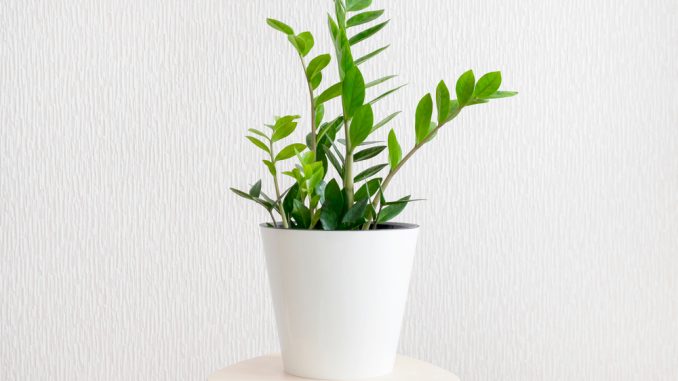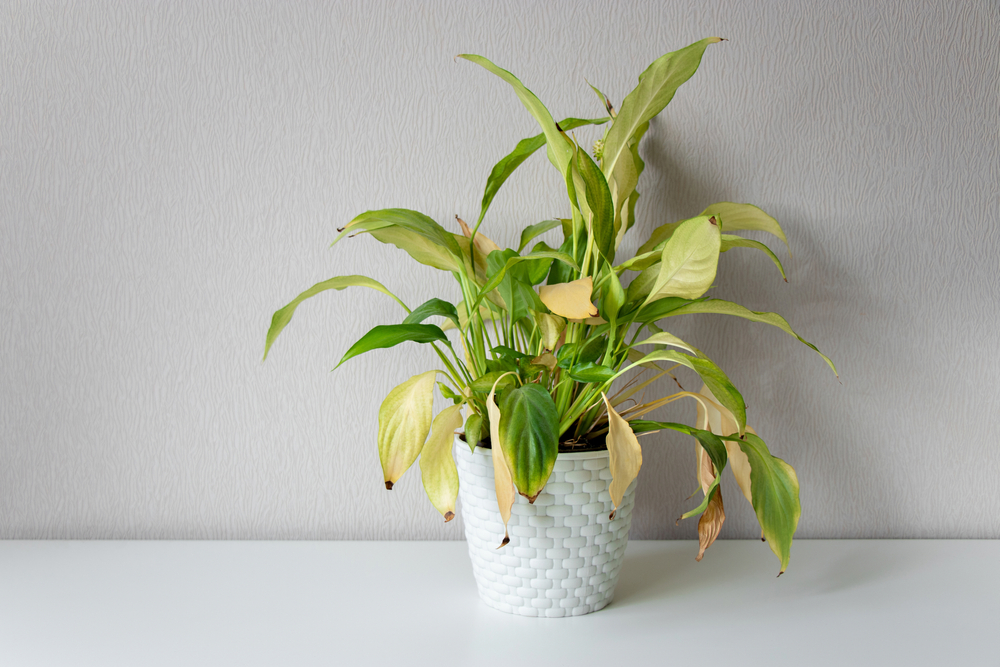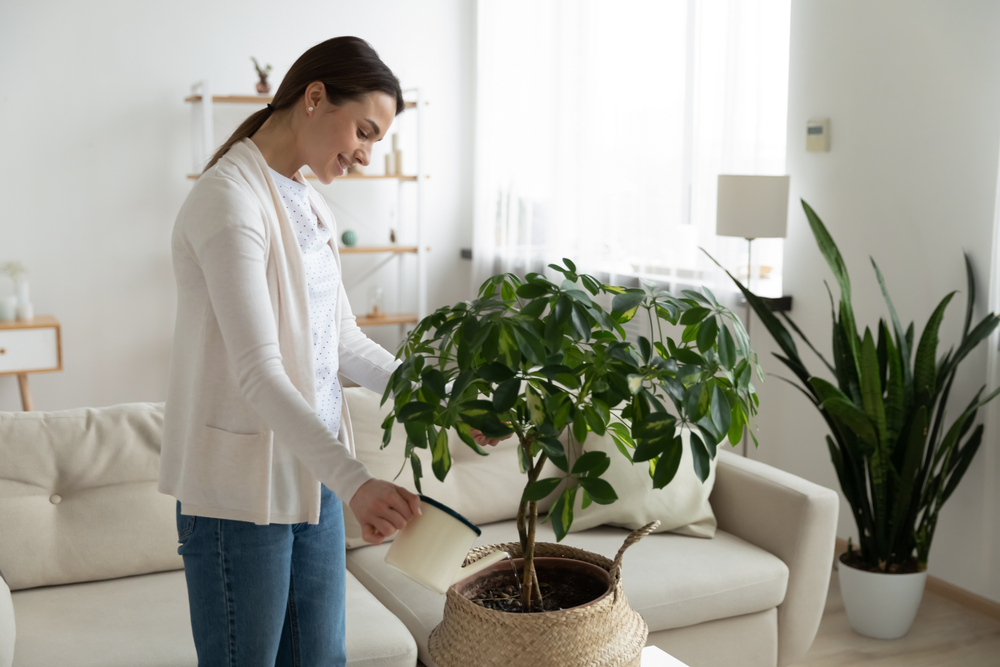
Not only do houseplants bring warmth and a sense of calm to a home, but they’re also an inexpensive way to decorate. Keeping your beautiful houseplants looking healthy and green is the challenge. The most common question is: Why do the leaves turn brown?
According to the Smart Garden Guide, there are many reasons why the leaves on your indoor plants may turn brown:
- Improper watering or fertilizing.
- Transplant shock.
- Environmental causes due to lighting, heat, drafts, or humidity.
- Pest or disease issues.
- Natural causes such as acclimatization or age.
The first step in solving the problem is to determine where on the plant leaf the problem is occurring. Is it along the edges or on the tip of the leaf? Are there brown spots?
Brown Leaf Tips
When the tips of the leaves appear dried out, thin like paper, and crumbly, that’s a good indication that you have a water or fertilizer issue going on.
Most houseplants take water up through the roots until it reaches the leaves, where it nourishes the plant through photosynthesis. If there isn’t enough water to go around, the leaf tips turn brown because they’re last in line.
The key to fixing watering problems is to know exactly how much water your plants need and then follow an appropriate watering regime. Some plants prefer their soil to be moist at all times, and others like the soil to dry out slightly before they’re given more water.

Underwatering
Use your index finger to check soil moisture levels, and only water once the soil has dried out an appropriate amount for the plant you’re growing. Then water thoroughly until excess water drains out the bottom of the container.
Overwatering
Most often, brown leaf tips indicate underwatering. But overwatering can also cause this problem by pushing too much air out of the soil and into the plant leaves, which removes all of the plant’s oxygen. If the brown leaves feel more mushy than stiff and papery, overwatering is likely the problem.

Brown Spots
This can occur randomly or sometimes in patterns on the leaves. If left alone, often those spots and patches can fill in and take over the entire leaf. Brown spots are usually a sign of disease or insect pests.
Insect Pests
Good care of houseplants means checking them routinely for insect infestation or diseases and then treating them quickly. There’s a range of options if you discover insect problems, from carefully picking insects off by hand to treating the problem with insecticidal soap.
Disease
In the case of fungal disease, you can try to treat the plant with a recommended fungicide from a garden store, although it may be easier and less expensive to discard and replace it with a new, healthy plant.
Entirely Brown Leaves
Sometimes, the leaves of a plant will fade into a yellow color and then turn brown, dry out, and fall off. This usually happens to the lower leaves on a plant but can also happen to top leaves or those in the middle.
When this happens, it’s often just a sign of a plant shedding leaves as part of its aging process. It’s completely unrelated to its care.
Routinely grooming your plants to remove these dead leaves—in the same way that you deadhead spent blooms on outdoor plants—allows the younger parts of the plant to receive more of the plant’s water and nutrition. It’s the circle of life and self-preservation in process.
To remove dead leaves that have not yet fallen on their own, use a sharp pair of scissors you have dipped in rubbing alcohol. Sharp blades minimize damage to healthy plant cells in the leaves, reducing the energy the plant must expend to heal the open wound.
Nutrient Problems
All plants need nutrients. It’s essential for their growth and beauty. Indoor plants take that from the soil. But when the soil becomes depleted, it’s necessary to replenish that with plant nutrients or fertilizer.
Underfertilizing
Lack of nutrients will cause plant leaves to die from lack of nourishment.
Overfertilizing
Giving a plant too much fertilizer is not good either. In fact, it is the second most common reason that leaves turn brown at the leaf tips, known as “fertilizer burn.”
Solution
The way to keep your plants well nourished but not overfertilized is to use an appropriate fertilizer according to the directions on the package label. Don’t go overboard!
Should you see a whitish buildup of salt on the top of the soil, you need to thoroughly flush the buildup out of the soil. Set the plant in a sink or bathtub, and water it with distilled water until the water freely flows out of the bottom of the container.
Mary Hunt is the founder of EverydayCheapskate.com, a frugal living blog and the author of the book “Debt-Proof Living.” Mary invites you to visit her at her website, where this column is archived complete with links and resources for all recommended products and services. Mary invites questions and comments at EverydayCheapskate.com/contact, “Ask Mary.” Tips can be submitted at Tips.EverydayCheapskate.com. This column will answer questions of general interest, but letters cannot be answered individually. Copyright 2021 Creators.com






Be the first to comment